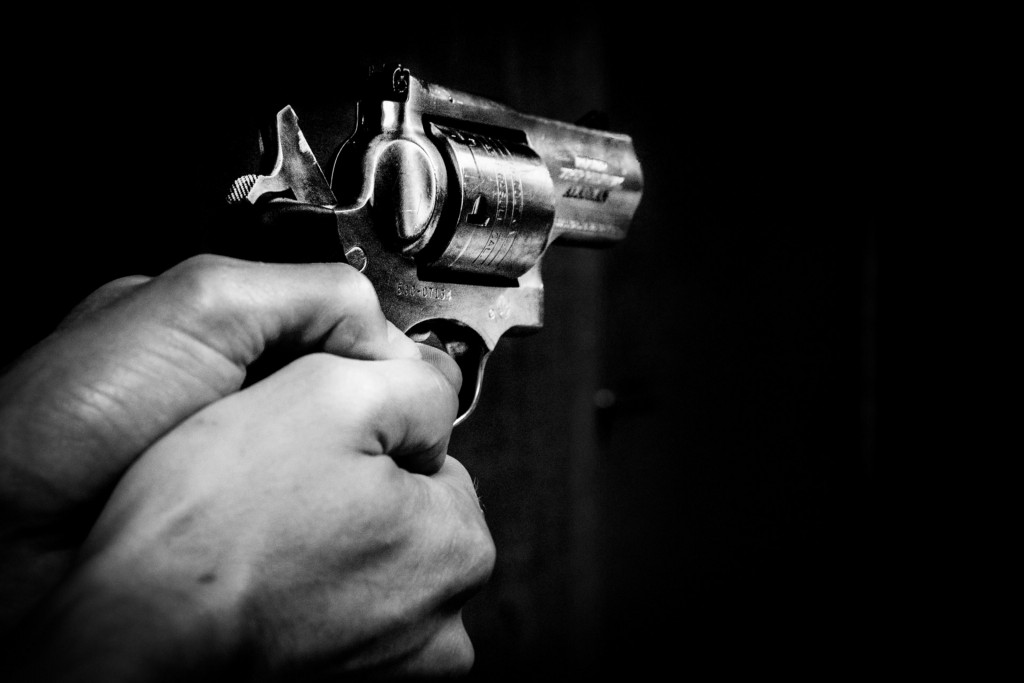
Data indicate law enforcement officials have killed nearly 500 civilians this year alone.
Pixabay
The number of fatal shootings by police officers in the first half of 2017 is nearly identical to the number of shootings recorded during the same time period in 2016 and 2015, according to the Washington Post’s police shootings database.
Police have shot and killed 492 people in the first six months of the year, and authors John Sullivan, Reis Thebault, Julie Tate, and Jennifer Jenkins write that police killings are set to reach 1,000 for the third year in a row. According to the Post’s database, which began in 2015 following the shooting of Michael Brown in Ferguson, Missouri, 992 people were killed by law enforcement officers in 2015 and 963 were killed in 2016.
“These numbers show us that officer-involved shootings are constant over time,” Geoffrey Alpert, a criminologist at the University of South Carolina, told the Post. “Some places go up, some go down, but it’s averaging out. This is our society in the 21st century.”
Data from 2017 show that armed white males are the category of people killed the most by police officers, a continuing trend over the past two years. However, black males are killed at disproportionately higher rates. While black men account for only 6% of the U.S. population, they make up about a quarter of police shooting victims. According to Mapping Police Violence, a database that tracks the number of black people killed by police officers, blacks are three times more likely to be fatally shot by officers than white people. The Post’s police shooting database shows that the number of black men killed by police has been declining — 50 were killed in the first half of 2015, 34 in the same period in 2016 and 27 so far this year.

While black men account for only 6% of the U.S. population, they make up about a quarter of police shooting victims.

Of the 492 people killed by police, 27 were reported unarmed. One such victim was 15-year-old Jordan Edwards, who was slain in April leaving a party in a Texas neighborhood when an officer fired several shots into a moving vehicle.
Equally alarming is the number of mentally ill people law enforcement officials have shot and killed — 121 so far this year. In June, Seattle police shot and killed 30-year-old Charleena Lyles, a mentally ill black woman who was pregnant at the time. She had called 911 to report an attempted burglary at her home, and officers allege she pulled a knife on the two officers. Reports from The Seattle Times revealed that one of the officers was not carrying a Taser at the time of the shooting, a violation of department policy.

Equally alarming is the number of mentally ill people law enforcement officials have shot and killed — 121 so far this year.

Chuck Wexler, executive director of Police Executive Research Forum, said the shootings of mentally ill individuals can be avoided. “We know we can make a difference in cases where the person is mentally ill and in cases where someone is not armed with a gun,” Wexler told the Post.
An estimated 8% of police departments across the country have had an officer fatally shoot a civilian since 2015. LAPD officers have killed 47 people since 2015, the highest number of any police department in the country. Phoenix police have killed the most people in 2017, fatally shooting eight.
Holding Hands With The Police May Kill Us
While the FBI technically tracks fatal police shootings, its database relies on voluntary reports from police departments and only covers cases of officers shooting alleged felons. Data from the Washington Post suggest the agency’s figures are significantly lower than the actual number. Former FBI director James Comey called the FBI’s system of tracking fatal police shootings “embarrassing and ridiculous” last October. On Saturday, the agency said it would move forward with a data collection program to gather information on police shootings in 50 local and federal law enforcement agencies, with the intention of forging a nationwide system in 2018.

While the FBI technically tracks fatal police shootings, its database relies on voluntary reports from police departments and only covers cases of officers shooting alleged felons.

In October 2016, the Department of Justice said it planned to collect more comprehensive data about police shootings. But under Attorney General Jeff Sessions, a Trump appointee who has called consent decrees a hindrance to law enforcement efforts, it is unclear if the agency will follow through on its promise.
Not only has the number of people fatally shot by police remained about the same as in previous years, so has the number of officers indicted for fatal shootings. Previous reporting from the Post reveals that from 2005 to 2015, just 54 officers had been charged, though police killed thousands during that period. More often than not, law enforcement officers were acquitted of all charges.
How We Learn To Love ‘Good’ White Men With Guns
In the past month, several officers have been cleared of charges after fatally shooting civilians. Officer Jeronimo Yanez was acquitted of all charges for killing Philando Castile during a traffic stop last July, though Castile was complying with Yanez’s orders. A week later, Officer Dominique Heaggan-Brown was acquitted in the shooting death of Syville Smith. In the case of former University of Cincinnati officer Raymond Tensing, who fatally shot Samuel DuBose in 2015, a mistrial was declared after the jury couldn’t come to a verdict. A separate trial for Tensing last fall also ended in a hung jury.

This story originally appeared on Alternet. Republished here with permission.


